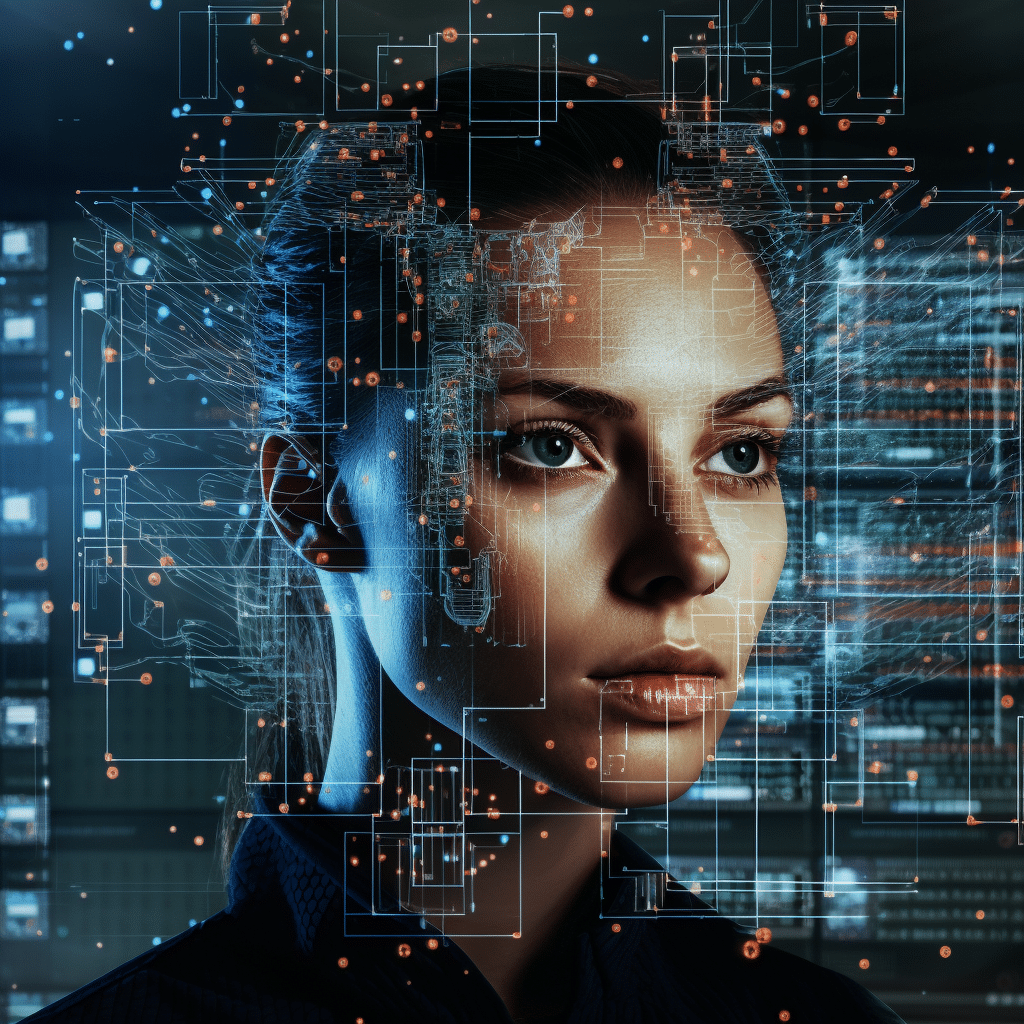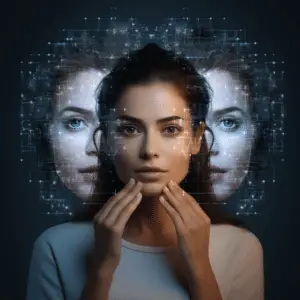
Introduction
Deepfake, a portmanteau of “deep learning” and “fake,” refers to the use of artificial intelligence (AI) techniques to create or manipulate video content, often by swapping or superimposing faces on existing footage. This rapidly advancing technology has gained significant attention due to its potential applications, but also its potential dangers. Let’s explore the current state of deepfakes and the challenges they present.
The Current State of Deepfakes
Various deepfake algorithms leverage generative adversarial networks (GANs) to mimic realistic facial movements, enabling remarkably convincing face swaps. These algorithms analyze and learn from extensive datasets, making it possible to generate high-quality deepfake videos that can easily deceive the human eye.
While the most common applications of deepfakes include creating entertaining or humorous content, such as face-swapping videos or parodying famous personalities, the technology also raises significant concerns regarding misinformation, identity theft, revenge porn, political manipulation, and more.
The Ethical and Social Implications

The rise of deepfakes has raised critical ethical and social questions. The potential for malicious use of this technology to spread misinformation or damage reputations is immense. Powerful deepfake films blur the boundaries between reality and manipulation.
Deepfakes threaten to compromise privacy, consent, and trust. Without consent, someone’s face might be used in explicit or libelous content, causing serious harm. Deepfakes can disrupt public discourse, endanger political campaigns, and threaten evidence authenticity by constructing misleading narratives.
Countering the Challenges
Tackling the challenges posed by deepfakes requires a multi-pronged approach involving technology, legislation,
and awareness:
-
- Improved detection algorithms: Researchers are actively developing sophisticated techniques to
identify deepfake videos. By analyzing artifacts, unnatural movements, or inconsistencies, these algorithms aim
to identify manipulated content and raise awareness. - Public education and awareness: Educating the public about the existence and implications of
deepfakes is crucial. By promoting media literacy, critical thinking, and fact-checking skills, individuals can
better distinguish between real and manipulated content. - Technological innovation: Simultaneously, technology needs to progress. Investing in robust
watermarking, encryption, and digital signatures can help authenticate videos’ integrity. Developing tools that
make it easier to identify deepfakes can empower individuals and organizations to protect themselves. - Legal frameworks: Governments and legal systems need to adapt to address deepfake-related
issues adequately. Legislations should focus on protecting individuals’ privacy, ensuring consent in content
creation, and establishing consequences for malicious uses of deepfakes.
- Improved detection algorithms: Researchers are actively developing sophisticated techniques to
Conclusion
Deepfakes represent a surprising and potentially dangerous technological development. While they present exciting
possibilities for entertainment and creative expression, the challenges they pose cannot be ignored. Addressing the
ethical, social, and technical aspects of deepfakes requires collaborative efforts involving researchers,
policymakers, and society as a whole. By staying ahead of the rapidly advancing technology, we can mitigate the
risks and ensure a safe and trustworthy digital environment for everyone.
What are the ethical and legal challenges associated with the use of deepfakes and AI video generation?
There are several ethical and legal challenges associated with the use of deepfakes and AI video generation. Some of the key concerns include:
1. Misinformation and Fake News
Deepfakes can be used to create realistic manipulated videos, leading to the spread of misinformation. This can have serious consequences on public perception, political campaigns, and personal reputations.
2. Privacy Violations
Deepfake technology sometimes involves the use of non-consensual data, including images and videos of individuals. This raises significant privacy concerns, as people’s images can be manipulated and exploited without their knowledge or consent.
3. Defamation and Harm to reputation
Deepfakes can be used to harm someone’s reputation by creating fake videos that depict them engaging in illegal or unethical activities. This can lead to severe loss of trust and potential legal consequences.
4. Consent and Consent Forgery
Deepfakes can be used to create forged evidence or fabricated recordings, making it increasingly difficult to determine the authenticity of video content. This challenges the legal system’s ability to rely on video evidence, raising questions about consent and the credibility of video recordings.
5. Identity Theft and Fraud
Deepfakes can be used for identity theft and fraud, as they can convincingly mimic someone’s appearance and voice. This can enable scammers to deceive others and carry out various malicious activities.
6. Lack of Accountability
With the advancement of AI video generation, it becomes increasingly difficult to trace the source of deepfakes, making it hard to hold individuals accountable for their creation and dissemination.
7. Impact on Trust and Perception
The widespread use of deepfakes and AI-generated videos can undermine trust in media, politicians, and public figures. It becomes challenging to differentiate between genuine and manipulated content, leading to a loss of faith in what is presented online.
To address these challenges, there is a need for robust legal frameworks and technological solutions that can detect and mitigate the harmful effects of deepfakes. Additionally, promoting media literacy and creating awareness about the existence and implications of deepfakes is crucial to help individuals critically evaluate the authenticity of video content.
How are deepfakes and AI video generation being used in various fields and industries at present?
Deepfakes and AI video generation are being used in various fields and industries for different purposes. Here are some examples:
1. The entertainment sector uses deepfakes to create realistic visual effects in movies and TV shows. Filmmakers can easily insert actors or recreate younger characters into sequences.
2. Marketing and advertising: AI video production creates customized ads for individual customers. Additionally, it can replace actors or celebrities in advertising.
3. Gaming: Deepfakes and AI video creation techniques enhance player experience by creating realistic and detailed virtual characters.
4. Social media and content creation: TikTok and YouTube users make viral and humorous videos using deepfakes. They can also be utilized for political satire or celebrity impersonation.
5. Education and training: AI video production enables interactive, compelling educational videos. This is ideal for imitating surgical operations in medicine and developing skills in vocational training.
6. Journalism and news industry: Deepfakes threaten credibility by creating fake news videos or manipulating political remarks, spreading misinformation.
In criminal investigations, deepfakes and AI video generating techniques can be utilized to examine and authenticate video evidence. This aids in assessing the reliability and correctness of recorded events.
It is important to note that while these technologies have numerous applications, they also come with ethical concerns and potential risks of misuse.
How can society mitigate the potential risks and negative consequences stemming from the increasing prevalence of deepfakes and AI video generation

As the prevalence of deepfakes and AI video generation increases, society needs to take proactive measures to mitigate the potential risks and negative consequences associated with them. Here are some strategies to consider:
1. Awareness and Education:
Increase public awareness about deepfakes and AI video generation, their potential dangers, and how to identify them. Promote media literacy skills to help individuals critically evaluate the information they consume.
2. Robust Legislation:
Develop and enforce strict legislation around the creation, distribution, and malicious use of deepfakes. Laws should cover various aspects, including unauthorized use, defamation, harassment, privacy infringements, and political manipulation.
3. Technological Solutions:
Invest in advanced AI-driven tools and technologies for detecting, flagging, and verifying the authenticity of media content. Develop watermarking and encryption techniques that can be used to authenticate original videos.
4. Collaboration with Tech Companies:
Encourage tech companies to actively address the deepfake challenge by investing in research and development of countermeasures. Foster collaboration among various stakeholders to share knowledge, expertise, and strategies in combating deepfakes.
5. Fact-Checking and Verification:
Promote fact-checking organizations and platforms that specialize in verifying the authenticity of multimedia content. Encourage social media platforms to adopt more rigorous content moderation policies and employ AI algorithms to flag potentially fake or manipulated content.
6. Ethical Guidelines for AI Use:
Develop and enforce ethical guidelines for the use of AI, especially in areas like video generation. Encourage responsible AI research and advocate for transparency and accountability in AI development and deployment.
7. Digital Platform Responsibility:
Hold social media platforms and online content-sharing platforms accountable for the content they host and disseminate. Implement stricter policies for removing and reporting deepfakes and maliciously manipulated content.
8. Media Collaboration:
Advocate for responsible journalism practices. Encourage media outlets to exercise caution while using AI-generated content and differentiate between real and synthetic media.
9. Public-Private Partnerships:
Establish partnerships between governments, technology companies, researchers, and civil society organizations to tackle the deepfake challenge collectively. Pool resources and expertise to develop comprehensive solutions.
10. Continuous Research and Development:
Encourage ongoing research and development in the field of deepfake detection and authentication. Invest in AI technologies that can stay ahead of evolving deepfake techniques.
By implementing these strategies, society can work towards mitigating the risks and negative consequences associated with the increasing prevalence of deepfakes and AI video generation.









Very interesting subject, regards for posting.Blog monry